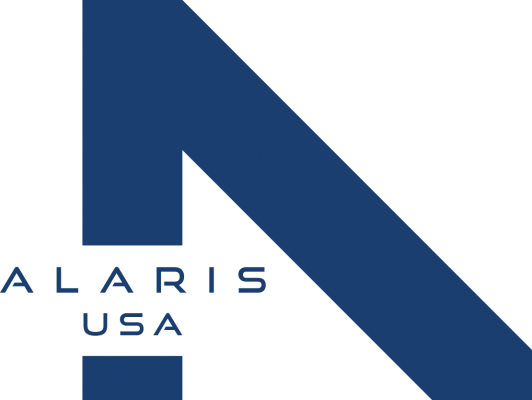WS-1: Workshop on Digital Transformation of SATCOM
WS-2: Workshop on 5G Military Communications: Open Modular Architectures, Testbeds, and Cybersecurity
WS-3: Workshop on Cyber-Physical Security in Mission-Critical Tactical Networks
WS-4: Workshop on Fundamental Advances in Information Latency
CANCELLED - WS-5: Workshop on Emerging Spectrum and NextG Technologies
WS-6: Workshop on Technologies for Multi-National Multi-Domain Operations and Digital Transformation
WS-7: 2nd Workshop on the Internet of Things for Adversarial Environments
Monday, 28 November
Time: 9:00 - 12:15 (AM Break at 10:30) 10:45 - 12:15
12:15 - 13:30 (Box Lunch)
Location: Grand Ballroom H/Main Level
Workshop 1: Digital transformation of SATCOM
Chairs: Juan Deaton
View Workshop Abstract
Driven by the rapidly changing space segment, satellite ground networks are in the midst of evolutionary change called the digital transformation. The digital transformation will enable the satellite communications (SATCOM) to realize benefits in terms of speed of innovation, scale, and cost. More importantly, the digital transformation will help fulfill the key demands of next-generation DoD SATCOM networks. The digital transformation comprises two components that are widely accepted and adopted in the larger telecommunications industry: digitization and virtualization. Digitization modularizes and commoditizes SATCOM modem architectures to use common hardware and introduces a new digital intermediate frequency (IF) interface. Additionally, standardization of digital IF (DIFI) is paving the way for these next-evolution architectures. Through a digitally transformed ground network, SATCOM systems can leverage new operational use cases that improve network and terminal agility and resilience. This half-day workshop includes a poster session and technology demonstrations where new approaches digital IF and virtualization use in SATCOM can be shared. The workshop will conclude with a panel session to discuss the current DIFI protocol issues and future role of DIFI in the digital transformation of SATCOM.
Monday, 28 November
Time: 9:00 - 12:15 (AM Break at 10:30 - 10:45); 10:45 - 12:15
12:15 - 13:30 (Box Lunch); 13:30 - 15:00; 15:00 - 15:15 (Break); 15:15 - 16:45
Location: Grand Ballroom G/Main Level
Workshop 2: 5G Military Communications: Open Modular Architectures, Testbeds, and Cybersecurity
Chairs: Gerardo Trevino; Amy Howard; Patrick Benavidez; Brian Kelley
View Workshop Abstract
The 5G Military Communications workshop will include a combination of Keynote sessions, 5G Demonstrations, and paper presentations. The topics will include 5G Stand Alone (SA) testbeds and systems, 5G open modular architectures, 5G Cores, 5G RAN, and 5G Cybersecurity. The Department of Defense is actively investing in 5G testbeds and other 5G-related prototype technologies. This workshop will serve as a technology transfer mechanism from these efforts as it relates to lessons learned and future research activities. The flexibility, growth, and performance benefits of software-defined architectures such as 5G are best accessed on an open modular hardware and software base to allow for rapid reconfiguration. Military solutions may need varying degrees of local communication stack instantiation and flexible topology architectures while maintaining cybersecurity across different contested environments. Features and functions for military 5G networks will also have to address interoperability, spectrum access, 3rd party application development, and UE security in order to meet military requirements.
Monday, 28 November
Time: 9:00 - 12:15 (AM Break at 10:30 - 10:45); 10:45 - 12:15
12:15 - 13:30 (Box Lunch); 13:30 - 15:00; 15:00 - 15:15 (Break); 15:15 - 16:45
Location: Grand Ballroom F/Main Level
Workshop 3: Cyber-Physical Security in Mission-Critical Tactical Networks
Chairs: Sahil Garg, Satinder Singh, Ultra I&C Communications, Montreal, Canada; Susan Watson, Defence R&D Canada, Ottawa, Canada; Fabrizio Granelli, University of Trento, Italy
View Workshop Abstract
Over the past few decades, evolving information and communications technology has been crucial for military operations. It is now possible to gather, transmit, store, analyze, and distribute data more quickly and efficiently due to the advancements in the field of sensors, computers, and wireless communications. As a result, command and control, intelligence, targeting, and logistical capabilities have all been enhanced and expanded. Thus, the current communication infrastructures are mostly getting replaced with rapidly deployable tactical networks (TN). In addition to being rapidly deployable and dependable, the ideal tactical network of the future should enable militaries to have access to state-of-the-art applications. With the 3GPP-specified 5G and beyond, TN gives access to applications such as remote-controlled devices, video-based group communications, augmented situational awareness and unmanned vehicles. These applications are enabled by edge computing, a technology that function with the TN to deliver compute, caching, sensing, and control services to a huge number of Internet of Things (IoT) and Internet of Battlefield Things (IoBT) devices in addition to the traditional communication services. However, due to the increasing interdependencies and complexity of networked systems, the enormous amounts of data that are generated continuously, changing non-technical requirements, and evolving adversary threats, maintaining cyber security in command-and-control systems of TN is a challenging task. Additionally, the number of possible threat actors grows as TN are linked to commercial networks, connect heterogeneous IoT devices, and facilitate collaboration across various authority bodies. To counter cybersecurity risks, a number of Artificial Intelligence (AI)-based detection methods have been developed. Although AI-based cybersecurity systems have shown good results when applied to traditional enterprise networks, there is still a sizable gap in their dependability and resilience when it comes to the capability of attack detection in TN. In addition, AI-based systems are vulnerable to a variety of attacks and threats, including adversarial and backdoor attacks, on both the data and the model, according to recent studies. These results point to a pressing need for pertinent research on dependability and resilience of AI-based cybersecurity solutions in TN. Finally, TN are vulnerable to supply-chain attacks, electro-magnetic cyber-attacks, and security breaches. Thus, designing and creating intelligent cybersecurity systems for TN becomes important. The proposed workshop is dedicated to the most current advancements and research findings on cybersecurity for mission-critical TN. It also seeks to give scholars and practitioners from all over the world a perfect platform to develop fresh approaches that specifically address the relevant major concerns.
Monday, 28 November (PM)
Time: 13:30 - 15:00 (PM Break at 15:00 - 15:15); 15:15 - 16:45
Location: Grand Ballroom H/Main Level
Workshop 4: Fundamental Advances in Information Latency
Chairs: Sastry Kompella; Tom Hou
View Workshop Abstract
The military IoT integrates a plethora of devices, ranging from small sensors to autonomous aerial, ground, and naval vehicles. In such autonomous military IoT systems, one must ensure that freshness of diverse information—ranging from control and autonomy information, to battlefield status information, amongst a distributed network of devices with local dynamics—be guaranteed at command and control before making real-time battlefield decisions. This yields a fundamental shift from a packet-transfer-based to an information-freshness-based approach to the modeling, control, and optimization of complex distributed and networked IoT devices. Analyzing the age of information (AoI) in a military IoT requires revisiting the fundamentals of information latency while meeting key challenges, such as:
- Dependence of the AoI on the (local) physical dynamics, network operation, and type of information which requires redefining the traditional notion of AoI to cater to heterogeneous information, device types, and application needs,
- Coupling among age of information, value of information, and cost of information, in terms of the latency needed for measurement and collection of data,
- Need for AoI synchronization among different, possibly coordinated military IoT devices,
- Large-scale nature of a military IoT and presence of a massive number of heterogeneous devices, and
- Interplay between AoI performance and security.
The goal for this workshop is to showcase recent major contributions made by a group of leading researchers to address the aforementioned scientific challenges through the following activities:
- Address the military IoT information freshness and latency challenges by developing a foundational framework, based on the notion of multi-mode AoI metrics;
- Theoretically and experimentally explore the network science of multi-mode AoI in military IoT systems;
- Develop new suite of tools to learn and optimize multi-mode AoI in dynamic military IoT systems;
- Optimize the trade-off between multi-mode AoI, cost, and value of information under massive self-organizing IoT;
- Develop security mechanisms to protect information freshness from AoI-centric adversarial attacks;
- Design and develop proof-of-concept demonstrations based on innovative concepts and support their transitions to the DoD/Navy’s R&D enterprise.
Friday, 2 December
Time: 9:00 - 12:15 (AM Break at 10:30 - 10:45); 10:45 - 12:15
12:15 - 13:30 (Box Lunch)
Location: White Oak A/Lower Level
CANCELLED - Workshop 5: Emerging Spectrum and NextG Technologies
Chairs: Sal Ditri; Joe Kochan
View Workshop Abstract
Coming soon.
Friday, 2 December
Time: 9:00 - 12:15 (AM Break at 10:30 - 10:45); 10:45 - 12:15
12:15 - 13:30 (Box Lunch)
Location: White Oak B/Lower Level
Workshop 6: Workshop on Technologies for Multi-National Multi-Domain Operations and Digital Transformation
Chair: Konrad Wrona, NATO Cyber Security Centre
Co-Chair: Warren Low, NATO International Civilian
View Workshop Abstract
Military operations are conducted often with partners and in a complex, multidimensional, highly dynamic and disruptive environment against adversaries who conduct operations that do not conform to established international norms. NATO joint force commander have traditionally operated within a Joint Operational Area with different component operating within the traditional land, maritime and air domain. With NATO’s decision to include the cyber and space domains, NATO commanders now are faced with operating within these five operational not bound by geography of yesterday. Concurrently, civilian dual use capabilities provide NATO and its adversaries access to near real-time intelligence and disruptive capabilities. Our adversaries use hybrid warfare techniques in an integrated fashion that utilize political, economic and social forms of power. NATO commanders need to respond to these challenges together with member and partner nations to develop an accurate assessment of the situation, generate potential courses of action, receive guidance from the political level and make decisions. This decision cycle must be made at the speed of relevance. NATO is addressing these challenges through a range of new initiatives such as the Warfare Development Agenda, the NATO Warfighting Capstone Concept, Multi-Domain Operations, recently released Artificial Intelligence policy and other innovation activities aiming to retain the strategic edge of the Alliance.
Coalition’s ability to provide federated core services, application, CIS security and cyberspace capabilities becomes pivotal. Performing effective coalition operations calls not only for capabilities, but mostly for robust and well implemented information exchange requirements, interoperability standards and federated processes. These need to extend from the strategic level of command, operational, tactical sensors and weapons systems.
The NATO workshop addresses topics of interest for the federation of military (materiel and non-materiel) capabilities. The focus of this session on technical and non-technical aspects to be included by design in forward-looking CIS capabilities, to enable true federations.
The topics include, but are not limited to the federated aspects of:
- Next Generation Network Challenges, Solutions and Applications for the Military DomainCommand and Control of the Information Environment
- Cyberspace Operations
- Data Sciences and Artificial Intelligence in support of the Situational Awareness and decision support
- Information Security Federated Operations
- Federated Service Management and Control
- Federated Space Domain
Friday, 2 December
Time: 9:00 - 12:15 (AM Break at 10:30 - 10:45); 10:45 - 12:15
12:15 - 13:30 (Box Lunch); 13:30 - 15:00; 15:00 - 15:15 (Break); 15:15 - 16:45
Location: Linden Oak/Lower Level
Workshop 7: 2nd International Workshop on the Internet of Things for Adversarial Environments
Chairs: Ananthram Swami; Tarek Abdelzaher
View Workshop Abstract
This workshop solicits original work that advances the science of dynamically composing, operating, adapting, and assessing future intelligent, mission-critical IoT applications that operate in harsh, unfriendly, or adversarial environments. The motivating application examples include disaster response, first-responder support, rescue management, extreme environmental, and systems that, by their very nature, are subject to frequent adversarial action. A common thread across the above systems is the need for high resilience in the face of a broad array of threats. By soliciting original research on attaining resilient and dependable operation in such a broad spectrum of harsh IoT application contexts, the workshop aims to help the research community collectively distill fundamental insights, key concepts, best practices, and analytical foundations to support a next generation of IoT services for mission-critical applications in adversarial environments.


































